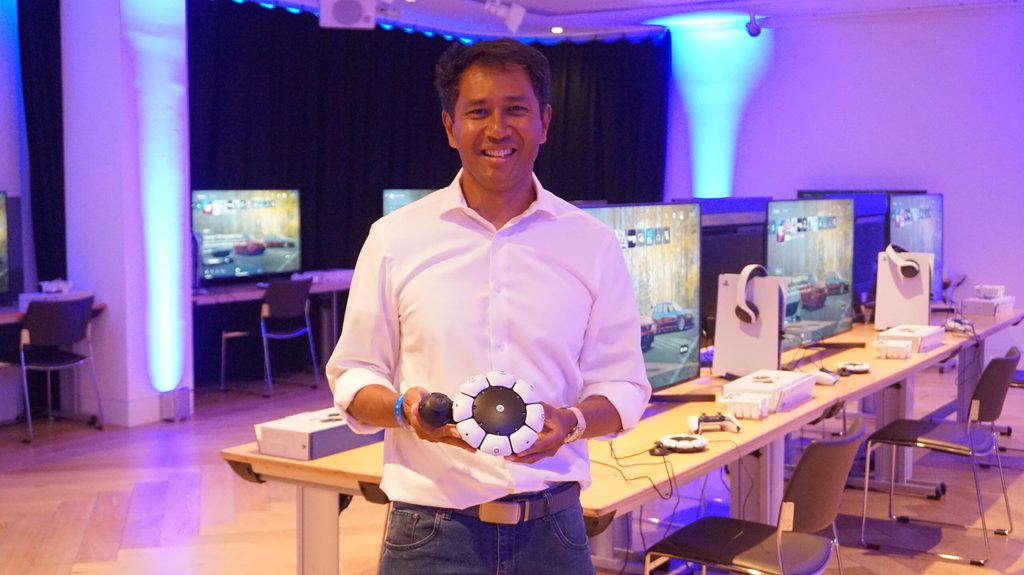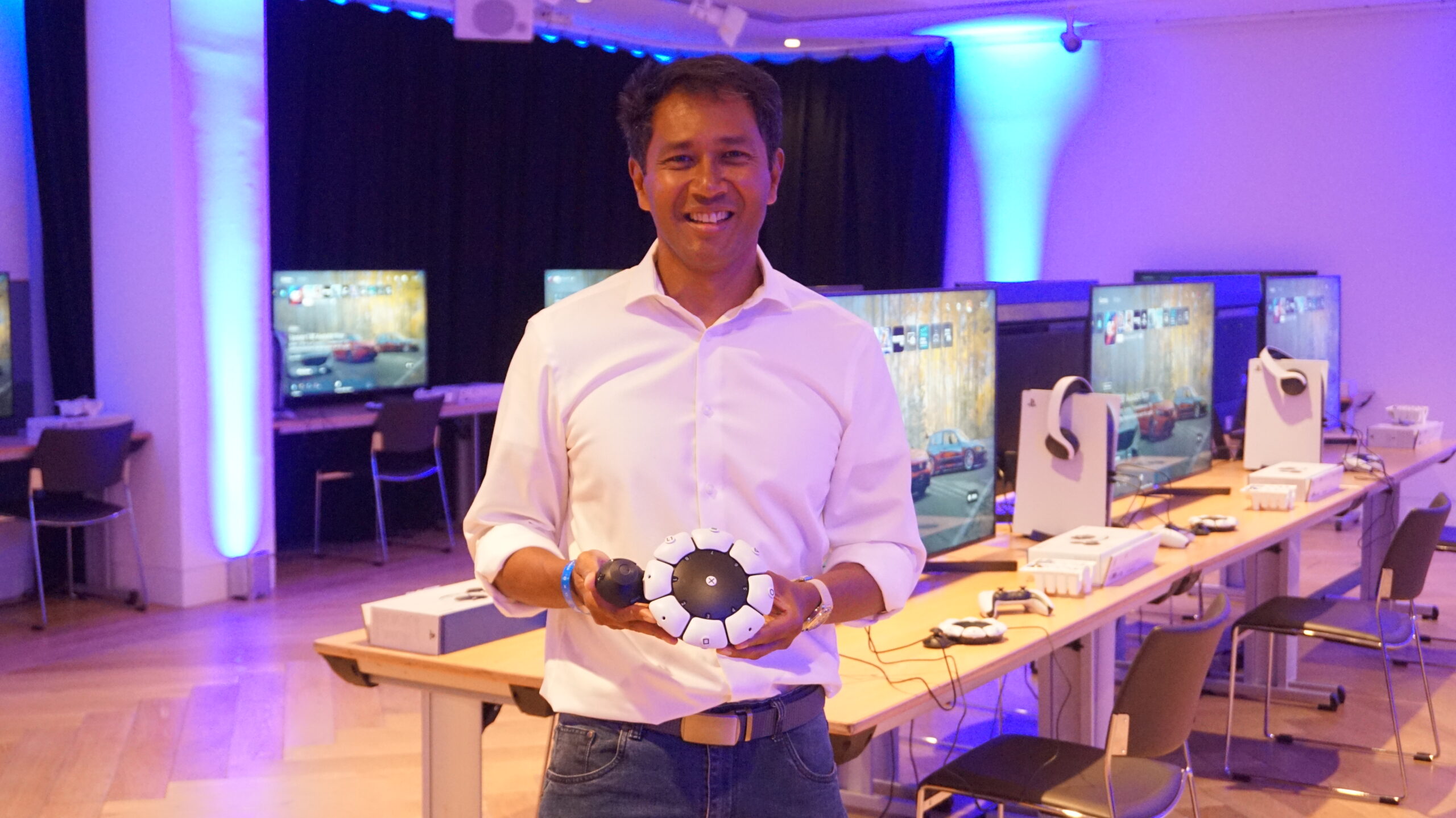how the highly customizable kit was created – PlayStation.Blog

The Access controller for PS5 will be released on December 6 and will enable gamers with disabilities to play more comfortably and for longer periods. The development of the highly customizable kit is a fascinating one, incorporating guidance and insight from experts across multiple disciplines. To coincide with today’s reveal of the controller’s accessible packaging and its design story, I sat down with Senior Technical Program Manager Alvin Daniel to talk the development process behind the Access controller for PS5.

See below for excerpts from our conversation, edited for length and clarity.
PlayStation Blog: Walk us through your development approach. How did the Access controller come to be?
Alvin Daniel, senior technical program manager for the Access controller: We had a mission to create a controller that helps players with disabilities. And at first, when we started the project, it seemed so daunting. How does one go about creating an accessible controller, given the diversity and different conditions and disabilities that exist?
And so the team started out with a very classic approach, which is, you know, we will look at census data, we’ll look at medical data and try to understand like, what are the most prevalent conditions of disabilities that exist, and we’ll try to solve for those.
And so we went down that path. And it turns out, that’s not very effective, for two big reasons. The first is that no two people experience disability in exactly the same way. And this point was driven home, we had a very early test group, where we had two players come in, and both of them had cerebral palsy. And the first player… he was in a wheelchair, he didn’t have a whole lot of arm strength. But he had a lot of finger dexterity. And if you could give him an accommodation — a pillow or mount — so he didn’t have to hold the controller, he was actually really proficient. He had a lot of finger dexterity, and he could play just about as well as I could, basically.
And then the second individual, also [had] cerebral palsy, also [used] a wheelchair. In that individual’s case, their hands had frozen to a fixed position, so had rigid digits. And so it became obvious very quickly that the standard controller was a brick; they could not use it at all.
And so here was an example of two players with the same medical condition, but needing highly different accommodations. So the point being that there’s a spectrum of wide diversity of different ways people experience a given condition. That was point one.
Point two was that your disability could be dynamic, meaning that it could progress or regress over time. So necessarily, the control or the adaptation you need on day one, is not the adaptation you may need on day 100. So given those two things, how does one actually go about designing a controller that was both flexible enough and adapted to players’ needs?
And so with the help of experts in this area and the help of the disabled player community, we did a really deep dive to try to understand what it was we wanted to help solve. And this came down to a very interesting insight: instead of looking at conditions, or impediments, instead, look at the controller. Look at the standard controller as it exists today. And ask yourself the question, “What prevents someone from effectively interacting with a standard controller?”
And out of that, we focused in on three key challenges. And [these are] precisely what the Access controller is designed to solve.
The first is, you don’t have to hold the controller to use it. The second, we make it much easier to press buttons. And the buttons on the controller are not only larger — they’re all organized in a single plane, like a keyboard, making every single button visible and easy to press. And uniquely, the Access controller ships as a kit. So we have, in-box, a whole pile of different buttons and stick caps in different shapes and textures and sizes that you could [use to] physically customize and configure the controller for yourself.
And the third, we wanted to make it much easier for you to interact with thumbsticks. And so with two Access controllers, or with an Access controller and a DualSense controller with a feature we call ‘collaborative use’, you can now freely position the thumbsticks as far apart or as close together [as you want], or in different orientations or different levels, in order for you to be able to game comfortably and for longer.
PSB: That’s a good point, you can use more than one Access controller or pair an Access controller and a DualSense controller. So it’s all about giving people lots of options…?
That was a key theme across all these different areas. I just talked about providing flexible options, so it’s not a one-size-fits all solution. We give a lot of flexibility. So players can tailor and [create a] solution for what they need.
PSB: Your team worked closely with accessibility experts through the design process. What kinds of guidance and wisdom did they offer?
Yeah, so there are three key partners I want to call out. AbleGamers, they’re based here in the United States. Stack Up, they’re a disabled military veterans organization, and SpecialEffect, our friends over in the United Kingdom.
They all provide instrumental guidance in helping us focus the problem from trying to solve for specific conditions, to trying to solve for specific impediments that might prevent you from being able to effectively interact with the standard controller. That’s one key insight.
The other key insight they helped us with is that there’s this ecosystem of other devices and peripherals that necessarily may need to be a part of the overall solution. So I’m talking about things like mounts, wheelchair trays, third-party switches, and triggers, and analog joysticks that might already be part of the solution or even in the disabled player’s home that we want to be able to take advantage of, and to be able to integrate with a device.
So it was very important for us that we, with each Access controller, provide additional support should the player need it to be able to integrate it with third party switches, for example. So that opens up a whole ecosystem from day one, to be able to further customize the controller to allow you to play longer and more comfortably.
PSB: Tons of customizations with the Access controller. Before we go, this may be a naive question, but are there common configurations you’re seeing? Are there certain setups or ways of using the Access controller that have really caught on?
It’s a great question – the Access controller looks like no other controller you’ve ever seen. And so it may take you some time actually to become proficient with it. And the experts tell us this is normal, and it’s called the adaptation period. People get accustomed to a new layout effectively.
Now, are there particular styles, or genres, or setups? The wonderful thing we’ve discovered is that everyone within our testing group has been configuring it to make it their own. So it’s actually interesting to see that it’s not uncommon that players have very different setups, even if they have the same quote/unquote, same disability.
They’re making it their own, in essence, which is precisely what we want to encourage. And the team has been surprised, actually, when players would organically do things or set up things in ways that we hadn’t anticipated. It’s like, oh, wow, they want to do that with the controller! Like, we never thought of that. But it’s great that they are. It’s another use case that’s been uncovered.
The Access controller is a highly customizable PS5 controller kit designed to make gaming more accessible, and it launches December 6. Learn more here.





